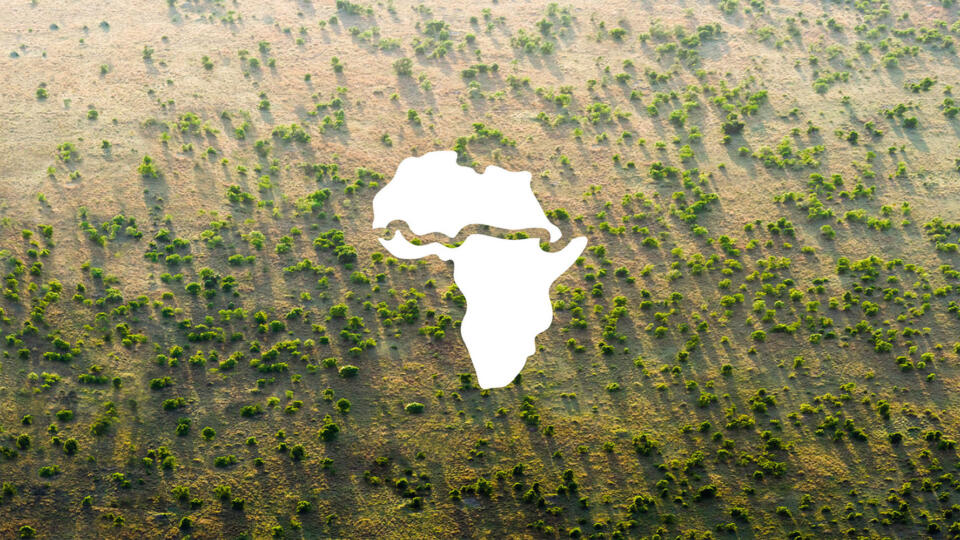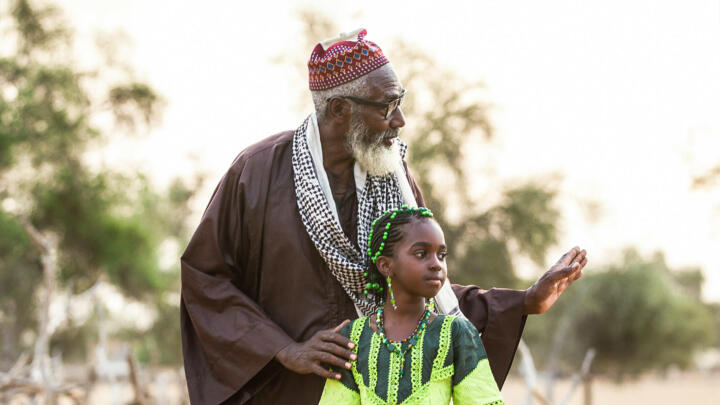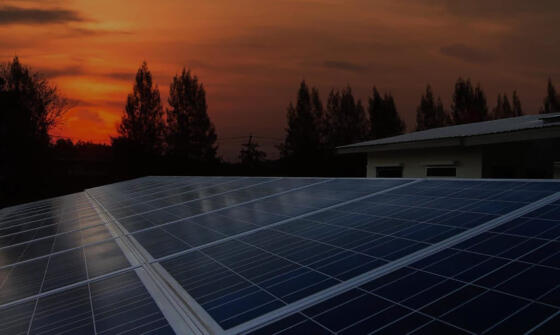
Green is the color of hope
“50 percent of the population in the Sahel region are under 25. We need to give them hope,” says Inna Modja, a young musician and activist from Mali. In a documentary about the project produced by Oscar-nominated movie director and producer Fernando Meirelles (“City of God,” “The Constant Gardener”) Modja travels thousands of miles along the planned restoration belt across Africa. It’s intended to become the largest living structure on Earth, three times the size of Australia’s Great Barrier Reef. On her journey, Modja meets people who are already working on growing the “Green Wall,” for instance in Senegal: in the country from where she embarks on her journey more than 18 million trees have been planted since 2008, mostly indigenous species that cope well with arid conditions.
At the next stops Modja again meets people who with great dedication and obvious enthusiasm want to actively help make their region more livable. A region that has suffered severe damage due to a drought of biblical proportions in the nineteen-seventies and eighties and now is additionally threatened massively due to climate change. It’s people like the young girls from the north of Nigeria who were abducted by the Islamist terrorist militia Boko Haram a few years ago and are now helping to grow the green wall from their orphanage.

Mammoth CO2 storage
Due to the roughly 8,000-kilometer (5,000-mile) belt of trees and shrubs – extending from Dakar in the west to Djibouti in the east – 100 million hectares (250 million acres) of currently infertile land are supposed to be reforested. But that’s not all. By establishing the Great Green Wall (GGW) the eleven participating countries, Senegal, Mauritania, Mali, Burkina Faso, Niger, Nigeria, Chad, Sudan, Ethiopia, Eritrea, Djibouti, and other supporting nations also intend to create thousands of jobs and fight poverty. In addition, the finished green belt is supposed to store 350 million metric tons (386 million short tons) of CO2, which is nearly half of Germany’s annual emissions.
Restoration projects such as the GGW that make rural areas fertile again are truly silver bullets in terms of sustainability and emerging around the globe. They cover no fewer than 15 of the UN’s total of 17 sustainability goals, above all goal number one: the fight against poverty. Greater wealth helps avoid conflicts and creates reasons for young people to stay which, in turn, helps break the migration cycle. This context also shows clearly that the Great Green Wall is not a regional environmental project but one that concerns the entire world population. The mammoth green belt is supposed to create a total of 10 million jobs for the local rural population someday.
A stop-and-go project
Since it was launched nearly 15 years ago, the project has been called visionary, hopeful, ambitious and inspiring. A look at the facts and figures published in 2020 by the United Nations Convention to Combat Desertification (UNCCD) shows in which areas the greatest successes have occurred, as well as the stumbling blocks the project has encountered. The good news first: In Ethiopia alone, around 5.5 billion seedlings have been bred and planted, one million hectares (2.5 million acres) of land cultivated, 220,000 jobs created, and more than 60,000 people trained as specialists in the areas of food, energy and biodiversity. In Eritrea, whose entire national territory – a third of the size of Germany – belongs to the GGW area, 130 million seedlings have been planted and 65,000 fields restored for farming. Niger on the other hand – besides having been successful in other areas – has been particularly active in curbing Sahara sprawl, having stabilized more than 80,000 hectares (200,000 acres) of dunes.
However, in view of the goals formulated in 2007, it’s obvious that some of them are still a long way off. Only 15 percent of the GGW’s overall goal has been achieved, according to the United Nations. The various reasons range from political instability to lack of money.
Financial support from around the world
For the latter problem, help is currently in sight. At the beginning of 2021, on the occasion of the One Planet Summit for Biodiversity, the GGW was promised an infusion of cash in the amount of 16 billion U.S. dollars (around 13.5 billion euros). This sum, at least, covers around 30 percent of the 31 to 37 billion U.S. dollars that the UN estimates are still needed to actually achieve the ambitious goals by 2030. Previously, four billion U.S. dollars (around 3.35 billion euros) had been promised during the UN’s Paris Climate Conference in 2015. Aside from that, the project is financed, for instance, by support from the African Union (AU), the United Nations, the World Bank, the EU and, not least, individual countries, first and foremost France that is one of the initiative’s official partners.
In terms of innovative ideas and their implementation, there’s still ample room for improvement in the project, according to experts. Elvis Paul Tangem, the coordinator of the Great Green Wall initiative in the AU commission, agrees: “The future of the Great Green Wall will rely on the project’s ability to innovate. It needs to move into new areas,” he says. This includes not only encouraging communities to switch to renewable energies but also raising additional financial means from the private sector and by national investors.
To achieve this, two action-oriented innovation platforms, 1t.org and UpLink, joined the initiative: Their “Trillion Trees Challenge” launched in March 2021 aims to drive the activities for building the Green Wall. The idea is for 12 previously selected startups to be given an opportunity to present their ideas for resolving various GGW issues (see below). The goal is to “source innovative solutions that help accelerate landscape restoration, help sustain livelihoods, foster food security, combat desertification and create economic opportunities in the region.” An intensive exchange among the twelve participants is planned for learning and sharing: innovative help for self-help. This is also in line with a mantra that kept crossing Inna Modja’s mind during her journey along the future Great Green Wall: “We will dare to invent the future.”
12 innovative growth accelerators
The Great Green Wall is thriving – but not equally well in all places. The “Trillion Trees Initiative” aims to drive the development with the following projects.
- Forested Foods wants to use forests in Ethiopia in sustainable yet lucrative ways. The agroforestry business is working across the entire supply chain, from cultivation to packaging.
- GasLowCost is enabling the population to generate energy from biogas instead of charcoal. The biogas is produced from slaughterhouse waste, household waste and compost.
- Green Aid – One Billion Trees for Africa is restoring and growing native trees across the Sahel by using traditional technologies for integrated agroforestry practices, developing a non-timber forest products value chain, and creating rural land restoration-based jobs.
- Green AgroFarms from Tele Bere promote community-managed agroforestry and agroecology initiatives that serve as a catalyst for landscape restoration, income generation, and food and nutrition security for rural women and youth.
- Groupe de Réflexion et Développement Durable works closely with Mali’s local population to take up sustainable forest management practices and to develop new value chains based on restoration and agroforestry.
- Labousitari in Niger is focused on protecting and restoring local tree species in the fight against desertification and to creating animal fodder value chains.
- Landscape Restoration for Ecosystem Recovery is dedicated to the sustainable management and restoration of wetlands and pasturelands coupled with sustainable agroforestry in Niger. In addition, the initiative empowers and supports Africa’s most vulnerable indigenous peoples.
- ProNat, a women-led social enterprise in Niger, provides local and regional markets with a healthy and balanced diet based on hive products and natural oils.
- Sahara Sahel Foods processes and markets foods from indigenous wild perennial crops. This creates jobs for rural small-holder farmers, destigmatizes these foods, and brings them back into peoples’ food habits.
- SeriousShea champions a novel value chain for shea butter. The innovative processing centers are supposed to be run on renewable energy, and logistics optimized within a sustainable forestry management model.
- SoilWatch applies remote sensing technology and machine learning to provide reliable and low-cost soil carbon measurements and to develop verified carbon offset projects for regenerable agricultural and pastoralism projects.
- Typha Alimentation Animale produces sustainable animal fodder from invasively spreading Typha, among other things.




